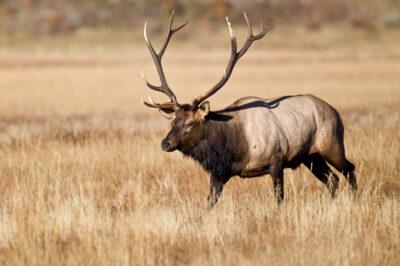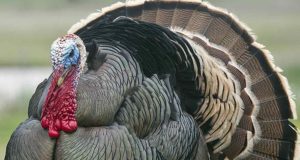
Tips For Beginning Big Game Hunting
If you’ve never tried big game hunting, and are considering getting into the sport, there are some basic principles of hunting that you may or may not be aware of. Hunting is an exciting and challenging pastime, one that not every prospective hunter will master. To some novices, hunting represents too much of a challenge, and frustration ensues when a catch isn’t made after even multiple attempts. Here are some tips to make your big game hunting trips more productive:
1. Hunt only one type of animal at first
Laser-like focus is the key to your early success as a hunter. If you’ve got several big game opportunities in your area, such as bear, mule deer and pigs, then pick one species to try first, and one species only. Novices will often make the mistake of picking a rifle and cartridge for, say mule deer, then packing other rifles or gear “in case” they see something else. While experienced hunters can often switch gears during a hunt by pursuing a species that serendipitously crosses their paths, new hunters need to focus on the species they are after. This means:
- Learning everything about the species they are seeking, including feeding habits, mating habits, the appearance of their scat, and what their natural environment is like.
- Learn where the species is most likely to be found.
- Learn what the natural predators of the species are.
Basically, if you have decided to go deer hunting, then go deer hunting rather than trying to bag a few ducks that you find along the way or follow that bear scat you found on the game trail.
Pocket-sized Solar Generator Provides Dependable Backup Power… Even In The Field.
2. Stick to a small area at first
Most novice hunters make the mistake of trying to cover too much ground in search of whatever they are hunting, and as such, they neglect the toll that all of this travel takes on their bodies. While it’s true that some species like bear are relatively few in number per square mile and require a hunter to cover a large area just to find one, the beginning hunter should hone his or her skills on game that is abundant and geographically constrained in space.
Hiking for miles while carrying a rifle and gear is hard work; work that most people aren’t used to, which leads to injuries, dehydration and disorientation. Consider stationary hunts for your first big game experiences; for example, consider setting up a tree stand over a game trail and waiting for deer to pass instead of actively stalking them. You’ll learn noise discipline, and also learn what sort of game passes over that trail so you can tailor your future hunts.
3. Consider trying a game reservation hunt as your first big game hunting experience
Game reservations and private hunting grounds have one key advantage to hunting in the wild; you are certain to find game. Taking the certainty of game out of the equation and using a guide, you can gain some valuable experience on engaging an animal target in a more or less controlled environment. Look for an outfit that has good guides, and above all, a sportsmanlike environment. It does you no good to shoot an animal in a pen, and you won’t learn a thing by doing it; having said that, if you can head out from base camp and go a mile, sighting your first animal within an hour of starting, you’re further ahead than spending all day outdoors and not seeing a thing.
4. Brush up on the basic principles of hunting
The basic principles of big game hunting relate to the behavior of the animal in its natural environment. This means that animals in general need water to drink, and thus they have watering holes they typically use. Because the watering holes are used by more than one species (potentially predators), the animals won’t usually eat or bed down by the watering holes. Instead, the animals will eat somewhere safe, and bed down somewhere away from too much activity.
Going from the watering hole to the food, and then to the bed down location, animals will create game trails – clearings in the bush that they follow, much like our freeways. Also keep in mind when animals are active; some animals are nocturnal, some operate during the day, and others are diurnal, which means they cover both day and night. As the name implies, hunting is the art of finding the animals, then engaging them. You can’t find them if you don’t know where to look!
Finally, brush up on your shooting positions, and teach yourself to shoot from positions other than standing, and while hidden behind cover. Practice stalking as silently as possible through brush, and also stay well aware of the direction of the wind in relation to where you are, realizing that most animals will smell you and flee well before you can see them. Keeping the basics of hunting in mind and honing these skills will make you a far more successful hunter.
Do you have any other tips you’d like to share? Let us know in the comments below.
 Off The Grid News Better Ideas For Off The Grid Living
Off The Grid News Better Ideas For Off The Grid Living



